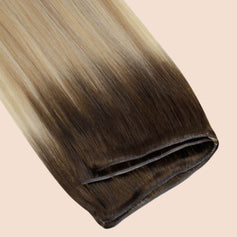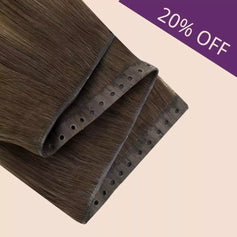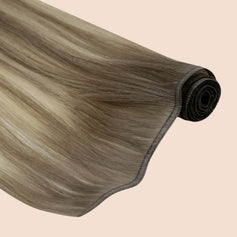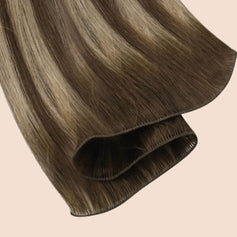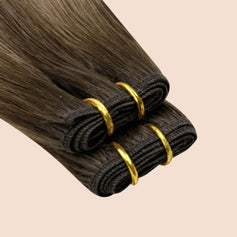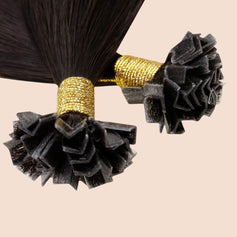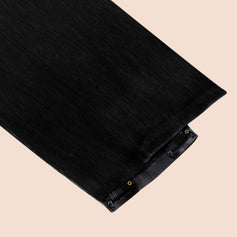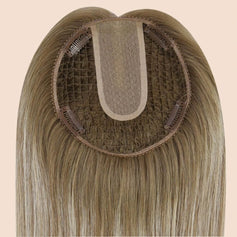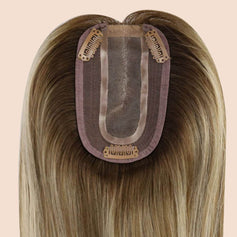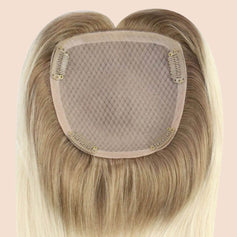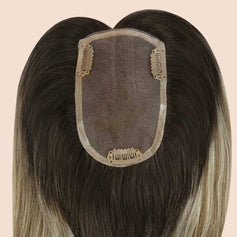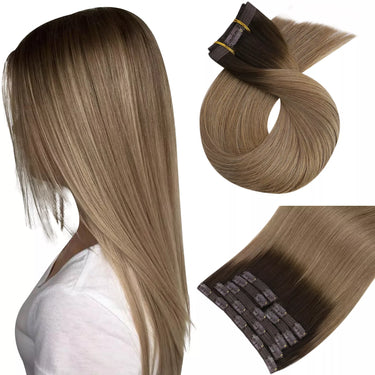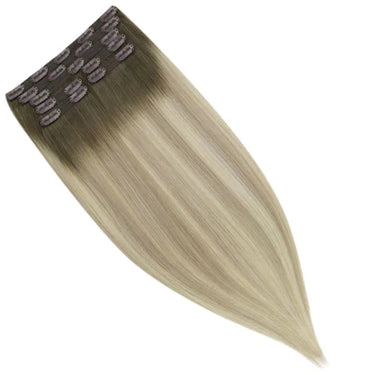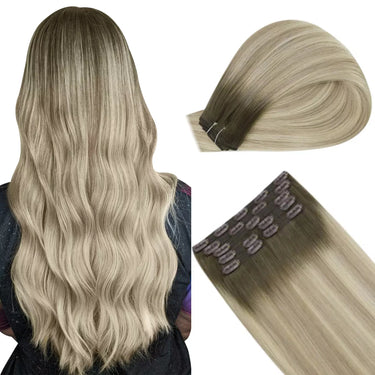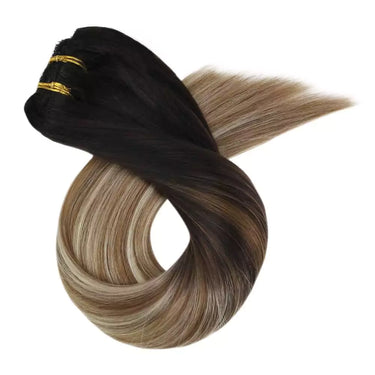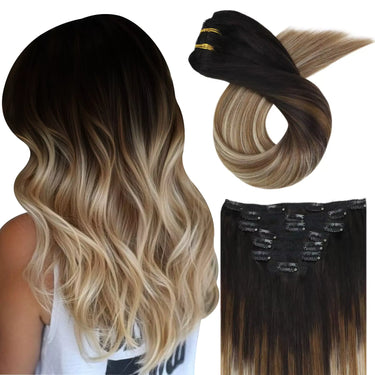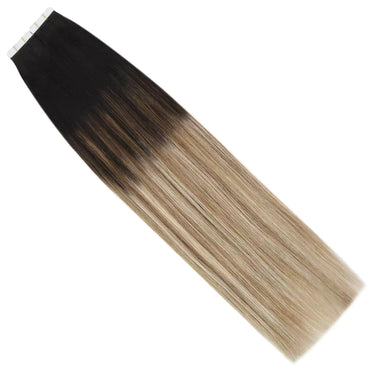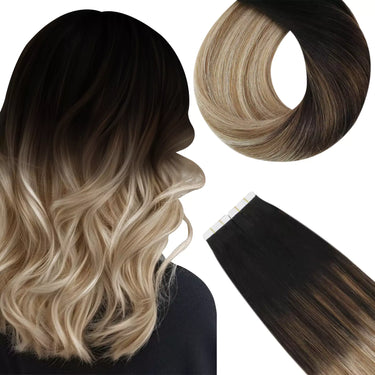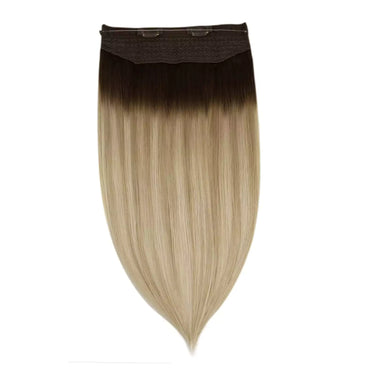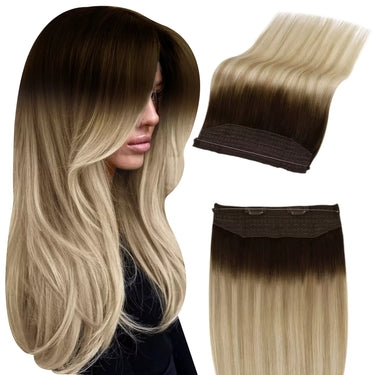
When it comes to hair extensions, tape in extensions are one of the most popular and effective options. They look natural and are relatively simple to install. However, like any beauty treatment, they come with some challenges. Today we will share common problems and solutions of tape in extensions.
Tangles and Frizz: How to Keep Your Extensions Smooth
Problem:
One of the most common problems with tape in extensions is tangles and frizz. Since the hair isn’t attached directly to the scalp like natural hair, it can sometimes lack moisture and become dry, leading to knots and frizz.
Solution:
To avoid tangles, it’s crucial to keep your tape ins moisturized. Use leave-in conditioners and lightweight pomades to replenish moisture without weighing your hair down. Also, avoid hot styling products. Regularly comb your tape in hair extensions with a soft brush designed for extensions to keep them smooth and tangle-free.
Tape Adhesion Failure: Preventing Your Extensions from Falling Out
Problem:
If the tape in extensions isn’t applied properly, or if tape in extensions are exposed to too much moisture, they can begin to loosen, causing tape in extensions to slip off.
Solution:
Proper installation is key to preventing this problem. Always make sure your tape in extensions are installed by an experienced professional hair extension stylist. The stylist will ensure that the tape is firmly attached to avoid gaps and loose bonds. Also, avoid excessive washing, swimming, or heat styling for the first 48 hours after installation so that the adhesive can fully cure.
Damage to Natural Hair: Avoid Breakage and Pulling
Problem:
One concern many people have when installing tape in extensions is that it may damage their natural hair. If the extensions are installed too tightly, it can cause tension on the scalp, leading to hair breakage and even traction alopecia (hair loss due to pulling).
Solution:
To prevent damage to your natural hair, always make sure the extensions are spaced properly and not too tight. Make sure the extensions are worn on clean, dry hair and are not too heavy to affect your natural hair.
Discomfort or Itching: Keep Your Scalp Comfortable
Problem:
Some people may experience discomfort or itching after having tape in hair extensions human hair installed, especially if they are sensitive to the adhesive or the extensions are not positioned correctly.
Solution:
If you experience itching or discomfort, it is important to avoid scratching your scalp, as this can damage the hair extensions. Instead, gently massage your scalp or apply an anti-itch solution formulated specifically for extension wearers. If discomfort persists, consult your stylist to ensure the extensions are worn correctly and not too tight.
Tape in Extension Showing: How to Hide the Tape
Problem:
In some cases, human tape in extensions can become noticeable, especially when wearing your hair in a ponytail or braid, which can make the extensions look unnatural.
Solution:
The key to avoiding tape showing is proper placement and blending. Ask your stylist to layer the extensions and apply them in areas where the tape will not show. For example, extensions should not be placed too close to the hairline.
Using a styling spray or leave-in shampoo will also help the tape blend in with your natural hair, making it even less noticeable.
Also, if you want invisible tape in extensions, consider injection tape hair extensions instead. Designed with thinner, more discreet tape, these extensions are virtually invisible even in an updo or tight hairstyle. The ultra-thin tape ensures that the tape is barely noticeable by your natural hair, giving you a perfectly natural look.
Extension Care: Avoid Overuse and Overstyling
Problem:
Overuse of tape in extensions or overstyling can cause wear and tear. It is important to understand that extensions are not permanent and will need to be replaced after a few months of use.
Solution:
To extend the life of your tape in extensions, rotate your hairstyles and avoid excessive heat styling. If you frequently use heat tools, always apply a heat protectant to prevent damage. Also, consider removing your extensions every 6 to 8 weeks for reinstalling. Regular care will keep your extensions looking fresh and protect them from long-term damage. Maybe you need accessories? Replacement tape and tape remover?
By following the tips above—moisturizing, proper installation, gentle styling, and regular maintenance—you can enjoy long-lasting, beautiful tape in extensions that blend beautifully with your natural hair.
You may also interested in:




